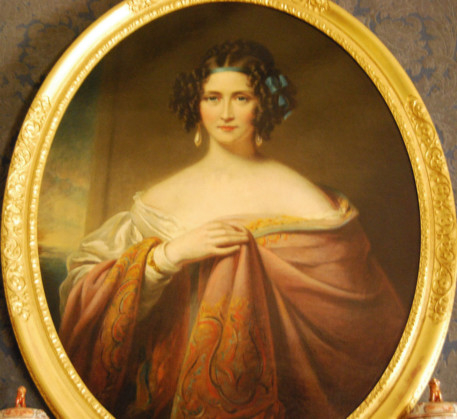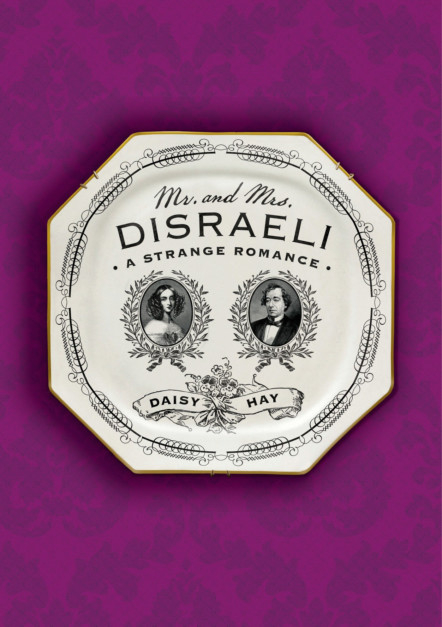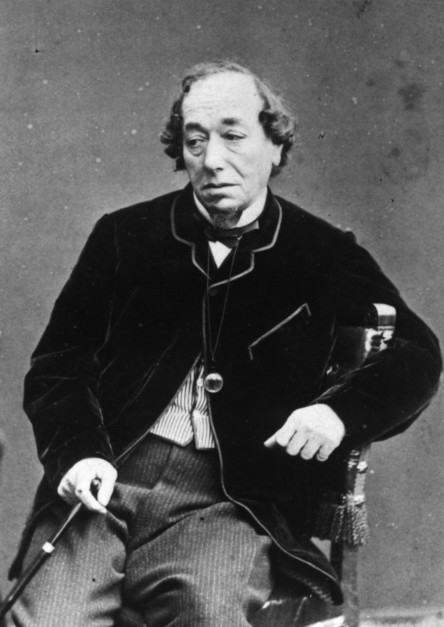
Mr and Mrs Disraeli: A Strange Romance
By Daisy Hay, Farrar, Straus and Giroux, 320 pages, $27
Benjamin Disraeli remains an extraordinarily modern figure, a source of perennial fascination. His seductive “one nation” rhetoric has been appropriated by Ed Miliband’s Labour opposition. His third novel, “Contarini Fleming”, was subtitled “a psychological romance”, while his regency metrosexual aesthetic predated Oscar Wilde by some 70 years. And then there is his marriage. Daisy Hay calls it “strange”. You can say that again.
Mary Anne Evans, 12 years Disraeli’s senior, was the daughter of a Devon sailor, given to sentimental and eccentric fantasies. She claimed, for instance, that she was a barefoot factory girl before being rescued by her first husband, the wealthy Welsh businessman and Westminster MP, Wyndham Lewis.
Her second husband, her “Diz”, was of Jewish-Italian origin, a fashionable, second-rank novelist and sociopolitical mountaineer who accumulated a mountain of debt to scramble to “the top of the greasy pole”.
Ambitious, precocious and determined, Disraeli endured remorseless antisemitism to edge his way forward in Victorian society. Like many young Englishmen growing up in the 1820s, Disraeli idolised Byron as poet, style icon, freedom fighter and romantic hero.
Whatever tempting insights this might suggest, there is not much mileage in psychoanalysing the dead. Daisy Hay avoids leaping to ill-founded judgment. Besides, her picture of the Disraelis’ relationships, before and during the marriage, tells its own story.
Before she became a tragic widow on the death of Wyndham Lewis, Mary Anne was accused of bigamy and promiscuity, while attracting a bundle of bad press from scornful contemporaries. Her future husband, in his patent leather pumps, with “chains about his neck”, was also a figure of intense speculation, projecting an air of “triumphant scorn worthy of Mephistopheles”.
As a young man, among many liaisons, Disraeli had two complicated dominant passions: first, for the novelist Edward Bulwer-Lytton, and then for Lady Henrietta Sykes, an older woman who signed herself “your Mother”.
While his public career was about to take off, Disraeli always calculated the political and intellectual implications of every association. When he was romancing Henrietta, he stood (unsuccessfully) for parliament, wrote political pamphlets and began to cultivate Tory grandees. Practically speaking, he needed a wife who was rich and single. Henrietta, who was married, could be of no use to his career. Disraeli conducted all his relationships in a manner that was strategic as well as passionate.
Enter Mary Anne, the tragic widow. She and Disraeli were both looking for a grand romance. Each fed the other’s fantasies. Disraeli, the silver-fork novelist, was an old master of the erotic charade. “I am mad with love,” he wrote to Mary Anne on one occasion, asking her to make sure, on their next meeting, that she came “ungloved”, so that he might “hold and clasp and feel your soft delicious hand”.
It was intrinsic to their grand passion that there should be rows. Both were adept at slamming doors and storming off into the night. After one such crisis, Disraeli composed a confessional letter that would have sent most sensible Victorian widows heading for the hills. “When I first made my advances to you,” he wrote, “I was influenced by no romantic feelings.”
He admitted he was after serious money, but had been deceived. Her fortune had proved rather less than he, or the wider world, imagined. “Farewell,” he concluded with a Byronic flourish. One day, perhaps, she would sadly recall “the passionate heart that you have forfeited, and the genius you have betrayed”.
Their wedding followed shortly after in August 1839. Soon, their mutual passion for a marriage of true minds was launched. It’s a feature of Disraeli’s astonishing act of self-invention, in a society in which he would always be an alien, that he had to make things up.
As his boss, Lord Stanley, later the Earl of Derby and leader of the Tory party, shrewdly put it to Queen Victoria: “Mr Disraeli has had to make his position, and men who make their positions will say and do things which are not necessarily to be said or done by those for whom positions are made.”
In truth, Disraeli and his wife were ill-assorted and seemed to know it. “He is a Genius”, Mary Anne wrote in her commonplace book, “she is a Dunce.” Disraeli would joke that his wife was “a very clever woman, but she can never remember who came first, the Greeks or the Romans”. Moreover, whatever his devotion to the idea of their marriage, Disraeli reserved his most private thoughts for his beloved Sarah, with whom he corresponded in secret throughout his married life.
The metropolitan press was scathing about Disraeli’s pretence that his wife was “young and beautiful” where she was actually “a middle-aged dame”. In society, she was what the Victorians called “a rattle” — loud, overpainted and overdressed. To Queen Victoria, who adored Disraeli, she was “very vulgar, not so much in her appearance, as in her way of speaking”.
Yet Mary Anne was devoted to her “Dizzy”, generously settling his debts and promoting his ministerial career when she could. Each participated fully in the public narrative of their marriage in a rather modern way. Disraeli, observes Hay, was “among the first generation of politicians who needed to appeal to a middle-class electorate”. He understood the importance of projecting something with which his constituents could identify.
It may have been a fiction, but it was a fiction with some good lines, many of which have already been rehearsed in Robert Blake’s pioneering biography of 1966. In one famous scene, after the late-night triumph of the second reform bill in 1867, Mary Anne fortified her husband with a meat pie. After he’d consumed some of the pie, Disraeli gallantly remarked: “Why, my dear, you are more like a mistress than a wife.”
In the past, some biographers have tried to convict Disraeli of adultery. For Hay, this is intriguing but irrelevant, although Dizzy’s relations with attractive young people of both sexes does open a vista of sexual alternatives. As well as unsubstantiated rumours of an illegitimate daughter, there was a succession of intense relationships with young men as well as women throughout Disraeli’s life.
Even allowing for a Victorian register in the expression of close friendship, Disraeli’s correspondence with Lord Henry Lennox, third son of the Duke of Richmond, was “strikingly intimate”, in Hay’s tactful formula. Disraeli routinely addressed this young man as “my beloved”. On one occasion, he signed off with “I am so tired I can only tell you that I love you”. Biographers who hunt in this line of country often focus on Disraeli’s secretary, Monty Corry, who became, as Hay puts it, “a kind of ideal son”.
None of this, as Hay is at pains to establish, amounts to the whole story. The Disraelis’ marriage was “a very remarkable alliance” and it was, for Dizzy himself, a case of “Love me, love Mary Anne”. All marriages have their mysteries, political marriages more than most. The marriage of Mr and Mrs Disraeli was stranger than fiction, but every bit as compelling.
–Guardian News & Media Ltd











